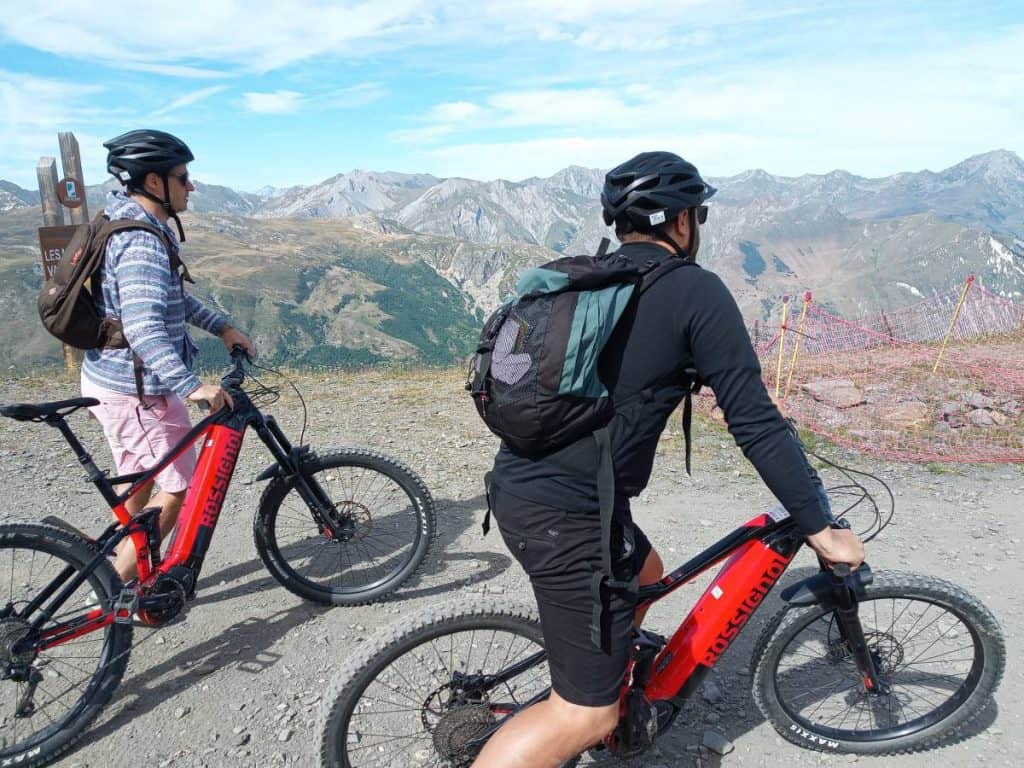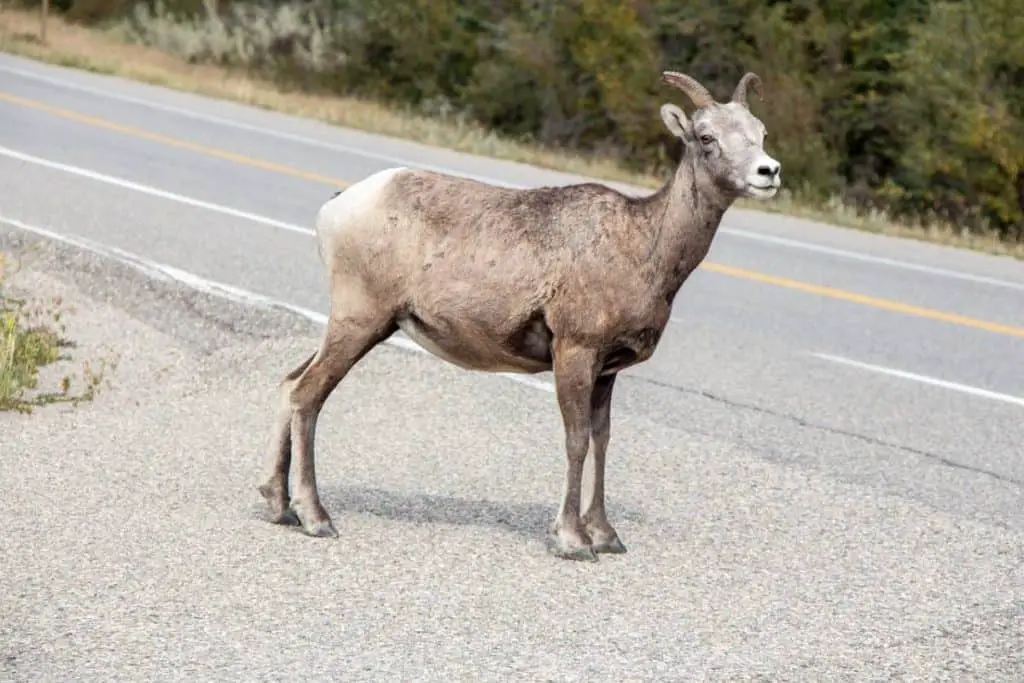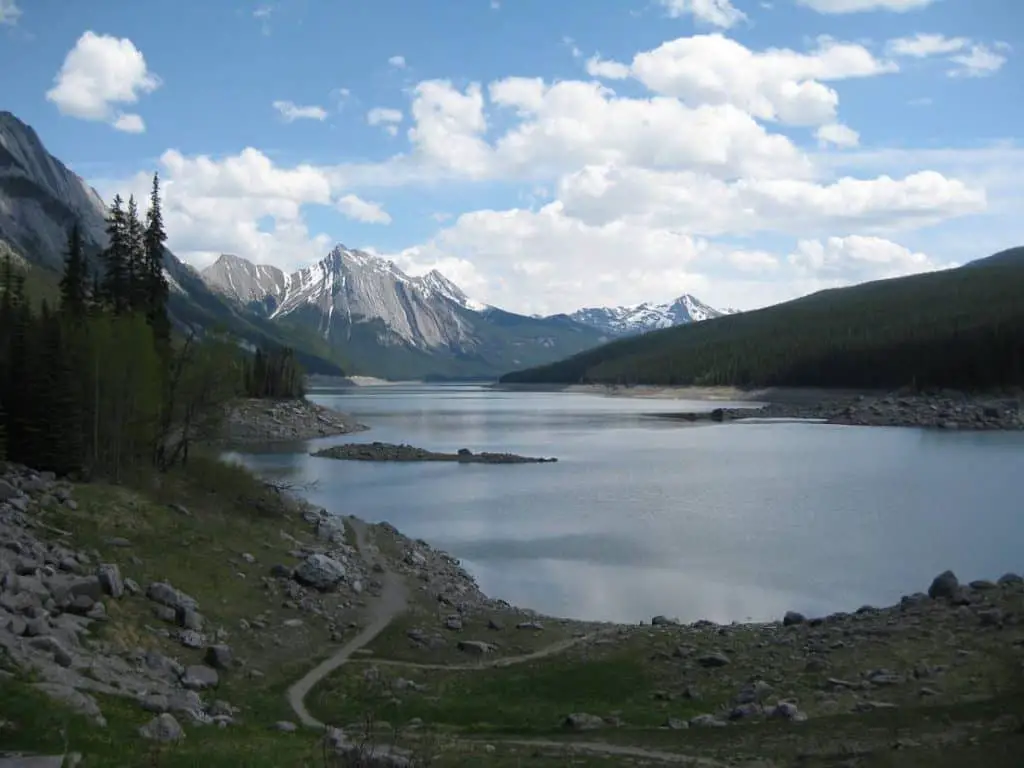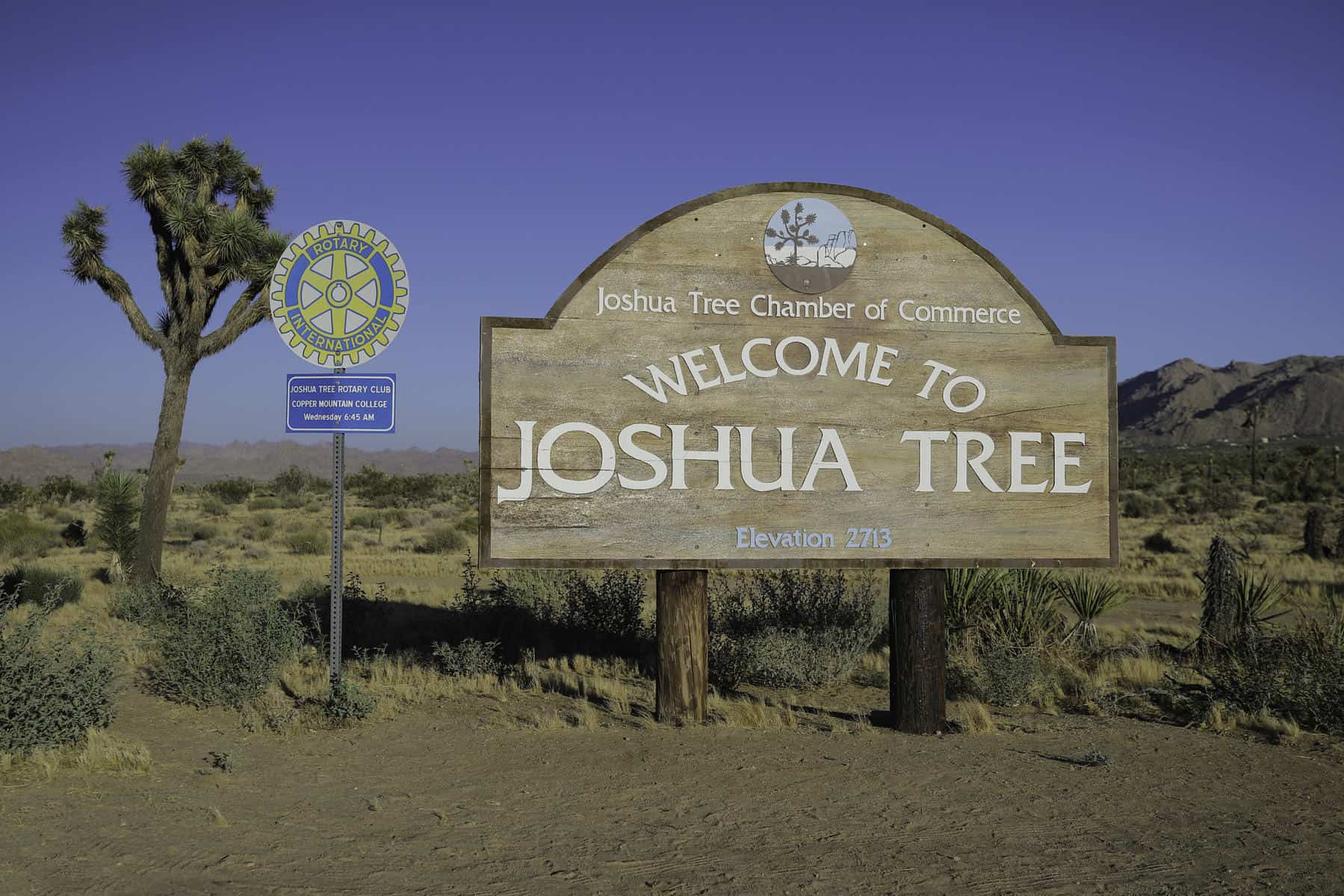Last Updated on March 25, 2023 by Igor Karni

Banff National Park is the oldest national park in Canada, located in Alberta’s Rocky Mountains. Banff National Park covers 2,564 square miles of mountainous terrain and is a popular tourist destination known for its alpine landscapes, wildlife, and coniferous forest.
Within the park is a hamlet called Lake Louise, which is also a popular destination. Many tourists come to Banff National Park for hiking, skiing, cycling, skating, sightseeing of natural landscapes, and more.
If you are thinking of visiting Banff National Park by electric bike, this article will address all your e-biking questions!
Are e-bikes allowed in Banff National Park?
While e-bikes are allowed here, they are only allowed on specific trails. The Parks Canada website states that e-bikes (or, power-assisted bicycles) are prohibited on trails in Banff National Park except on:
- Trails within the town of Banff
- The Banff Legacy Trail from the Banff East Gate, through the Town of Banff, to the east end of the Bow Valley Parkway
- The Bow River Loop Trail from the Lake Louise campground or Bow River Bridge opposite of historic Lake Louise trail station (Station Restaurant)
- The Tramline Trail from opposite of the Lake Louise train station to the main parking lot at Upper Lake Louise
- Great Divide Route from the parking lot at 3.6 km mark of the Lake Louise Drive
It’s very important for e-cyclists to take note of these trails before embarking on their trip, as these are the only routes that e-bikes are allowed on. Check further regulations here.
Next, riders should follow Albert’s e-bike laws while in Banff National Park. Alberta identifies e-bikes as “power bicycles”, and the motor output must not exceed 500 W and cannot travel faster than 32 km/h (20 mph). As well, fully operable pedals are required.
Read also: What are e-bike rules and regulations in Canada? And, What to do with e-bike insurance in Canada – in this article.
How is Banff National Park organized, is it ready for cycling?
Since Banff National Park is located within the Rocky Mountains, the park is primarily comprised of mountainous terrain.

Paths for cyclists range from paved trails and roadways to marked cycling routes and gravel paths, and the trail difficulty levels range from easy to very difficult.
As the park is a popular destination for cyclists, it is very well-equipped for road and mountain cycling and is considered extremely bike-friendly.
Where to stay during the trip?
If you are planning to do a multi-day trip in Banff National Park, there are many camping spots and hotels to stay in here.
Banff National Park offers an extensive list of campgrounds. Here are a few: Castle Mountain, Protection Mountain, Mosquito Creek, Johnston Canyon, Lake Louise Tent, Tunnel Mtn. Village I, and Two Jack Main. For the full list of Banff campgrounds, view this listing here.
If you prefer staying in hotels, a few options include The Hidden Ridge Resort, Canalta Lodge, Elk + Avenue Hotel, Banff Park Lodge, and Moose Hotel and Suites. For more options, visit Booking.com’s full list of hotels here.
Where to eat? Or should I take my food with me?
It is advised to take food/snacks with you while on your e-cycling adventure in Banff National Park to keep your energy up while on your trip. That said, there are also many diverse food options to choose from while you’re in Banff National Park.
If you’re looking for grab-and-go options, options like Wild Flour Bakery, Squish Sandwich Cellar, Aardvark’s Pizza, and Seed and Salt are highly recommended. For sit-down restaurant options, top-rated spots include Sky Bistro, Farm and Fire, Eden, Ramen Arashi, 1888 Chop House, and The Juniper Bistro.
Visit this Trip Advisor list here for more food recommendations!
What gear should I take on the trip?
If you are doing a day trip in Banff National Park, essentials include: a helmet, a backpack, your e-bike charger, water, food/snacks, sunglasses, a hat, sunscreen, mountain bike shoes, reflective clothing, front and rear lights, side reflectors and bike gloves.
If doing a multi-day trip, additionally bring: an extra battery, multiple pairs of bike clothes and underwear, spare tires, a flashlight, a bicycle repair kit, and mini pump, and a daypack with a rain cover. Bring a tent, sleeping bag, food, cutlery, and dishware if planning to set up camp overnight. Additionally, bring a method of payment and ID if you are staying at a campground or hotel.
In general, it is also advised for cyclists to not wear earbuds while riding, to always ensure maximum alertness. This safety precaution is due to the Rocky Mountain wildlife, which includes wolves, cougars, elk, and grizzly and black bear populations.

Riders should be aware that they may encounter wildlife, even on roads and paved trails, and should carry bear spray with them at all times. Riders should also slow down and make noise through shrubby areas and blind corners. This is because a cyclist’s speed and quietness may put them at risk for sudden wildlife encounters.
Read also: Are electric bikes good for the environment? And, World’s top travel destinations by electric bike (USA, Canada, UK, Australia).
Where to charge my e-bike?
Though there is currently no official map or list of charging stations specifically for e-bikes, there are a number of charging sites for electric vehicles within Banff National Park.
Riders may also be able to charge their e-bike at campgrounds, bike shops, and some cafés and restaurants. Be sure to always bring your charger with you, as a full day’s worth of riding will likely deplete your battery.
Refer to Chargehub or Chargemap for more comprehensive lists of electric vehicle charging stations and their exact locations.
What kind of e-bike do I need to ride in Banff National Park?
Since Banff National Park is primarily mountainous, e-cyclists should use an electric mountain bike (eMTB) or an all-terrain e-bike to properly tackle the landscape.
Read also: How to select your first electric mountain bike? And, How much does a good eMTB e-bike cost?
Where can I rent an e-bike in Banff National Park, or should I take one with me?
Yes, there are a few places in Banff National Park where you can rent an e-bike! We will provide links to these rental companies later in the article.
There is also the option to take your e-bike with you, but be sure to adhere to Alberta’s e-bike laws before bringing your e-bike (e.g. ensuring your e-bike has a 500W maximum motor output and a 32 km/h speed limit).
Read also: Best known e-bike brands in Canada. And, Best e-bike financing option in Canada.
What else I can do while on an e-bike trip in Banff National Park?
Though the primary attraction in Banff National Park is the Rocky Mountains, there are a plethora of sights to see, primarily consisting of natural landscapes.
While there, travelers can check out the charming Town of Banff, go stargazing at Lake Minnewanka, visit the Banff Upper Hot Springs for a relaxing hot springs experience, see a beautiful view of the mountains on the Banff Gondola, visit the famed turquoise lakes at Lake Louise, or check out the impressive glaciers in the Columbia Icefields.
What is the best time of the year to visit Banff National Park on an e-bike?
The best time of year to visit Banff National Park is during the road and mountain biking season, which runs from May through October. During these months, this is when the weather tends to be warmest and most pleasant.

Though encountering snow is always a possibility at any time of the year, warmer weather means that cyclists are less likely to encounter very icy or snowy terrain.
During the summer months, average temperatures reach highs of 22 degrees Celsius during the days and can drop as low as 5 degrees Celsius at night. Learn more about the monthly high and low temperatures here.
Resources to help plan your trip
For more important resources, such as safety procedures, visit the official Parks Canada website for Banff National Park here. Additionally, view the Banff and Lake Louise official tourism website, which can be referred to for park rules, regulations, and further trip planning information.
If you’re looking to rent your e-bike, Banff Cycle offers e-bike rental options, as well as guided tours. For example, they offer an e-bike specific tour called “Banff and Bow Valley E-bike Tour”, which may be an ideal option for riders who are concerned about staying within the restrictions for e-bikes in Banff.
Banff by Scooter & E-Bike also has rental options for e-cyclists, offering half-day and full-day rental options. For riders planning to do a self-guided tour, refer to this Ski Big 3 list of top routes for e-bike riders.
For both daylong and multi-day trips, experts advise cyclists to refer to the Banff Visitor Centre for route and weather conditions.
And finally, to read more about Banff National Park’s attractions, visit Planetware’s full list here!
Read also: Check out Canada’s best travel destinations by electric bike.
Check out breath-taking views of Banff National Park in this video:
Igor is a sustainable mobility and green energy advocate. His mission for Easy E-biking is to help make electric cycling simple, practical, and fun. Follow him on Facebook and LinkedIn.





